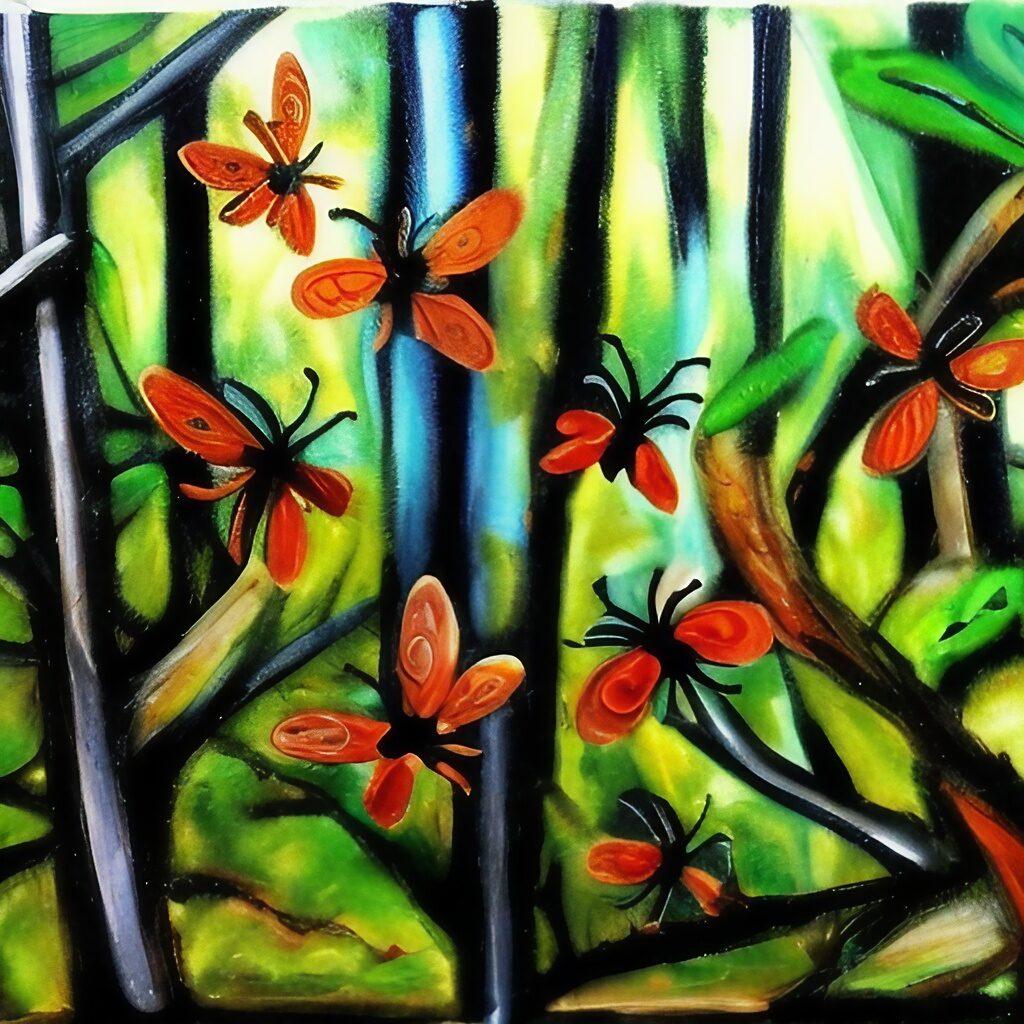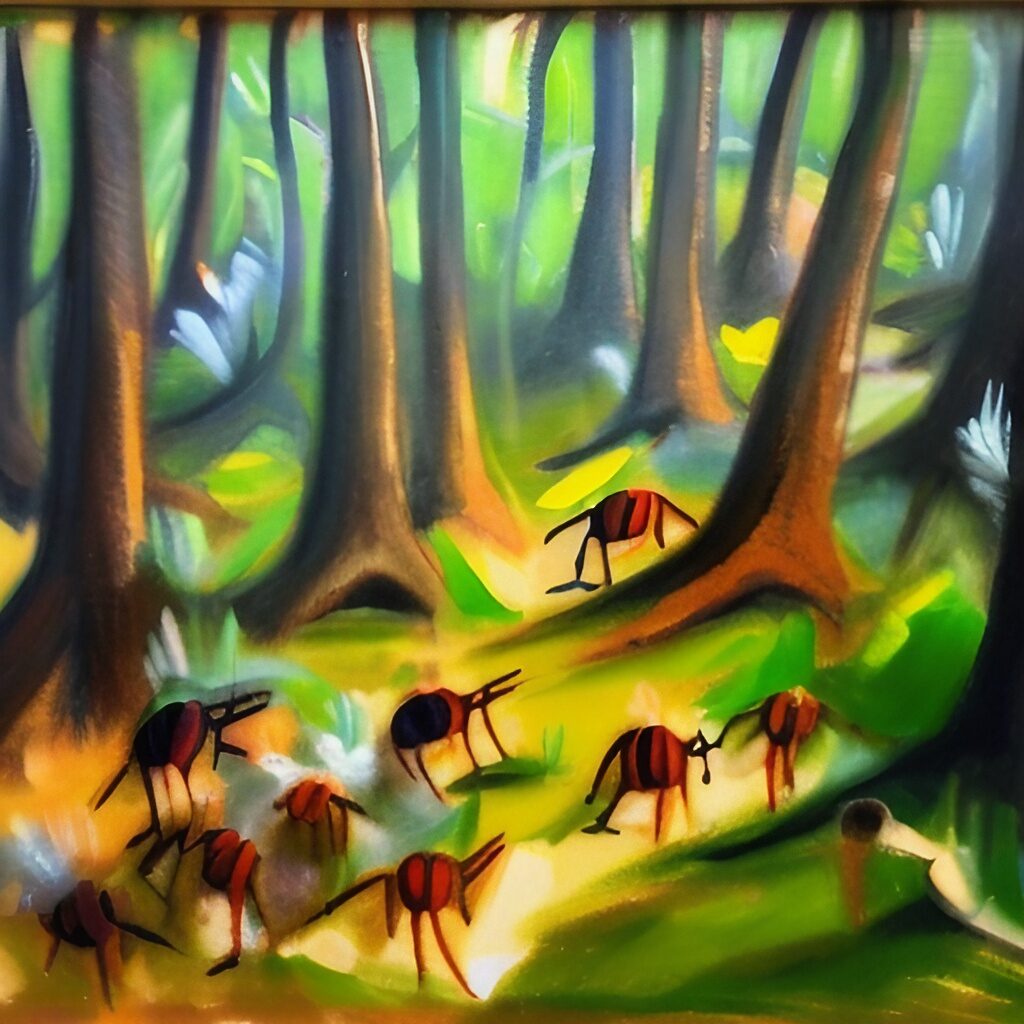
We all know that bugs are attracted to light, but it got me wondering if bugs are attracted to anything else—like color. What color attracts the fewest bugs?
Insects are known to be attracted to certain light colors in the spectrum. Generally speaking, insects are most likely attracted to warmer colors such as yellow, orange, and red. These colors have a wavelength that is closer to the sun’s light and therefore, more appealing to the insect’s eyes.
Cooler colors such as green, blue, and violet have a longer wavelength and are less likely to attract insects. Insects are also attracted to ultraviolet light, which is outside of the visible light spectrum and invisible to the human eye. So when it comes to attracting insects, warmer colors are the best bet.
As a quick summary, Red attracts the fewest insects. Light pastel colors work well to repel mosquitoes. Pink, yellow, and orange don’t attract quite as many bugs as other colors. Bees and wasps are attracted to yellow, but most other bugs don’t find it particularly appealing.
It’s a complicated topic, and there isn’t much research to date on how color attracts bugs, but I’m going to share everything I’ve learned from doing a deep dive into the topic.
Here’s a summary based on the type of bug:
| Bug Type | Colors they are attracted to | Colors they can’t see or would be repelled by |
| Bees, wasps, and pollen beetles | Yellow, black furry/leathery objects | Red |
| House Flies | Blue | Yellow |
| Horseflies | Dark colors, moving objects | Black and white stripes |
| Mosquitoes | Dark colors | Light pastels |
| Butterflies | Red, yellow, orange | None/unknown |
- The Central Question – What Color Attracts the Fewest Bugs?
- What Bugs See Instead of Red – What Color Attracts the Fewest Bugs?
- The Colors that Bugs Hate – What Color Attracts the Fewest Bugs?
- The Colors that Attract Bugs – What Color Attracts the Fewest Bugs?
- The Colors You Should Use While Camping – What Color Attracts the Fewest Bugs?
- Conclusion – What Color Attracts the Fewest Bugs?
- Frequently Asked Questions – What Color Attracts the Fewest Bugs?
- What Color Should You Wear to Avoid Attracting Bugs? – FAQs
- Why Do Bugs Seem to Prefer Darker Colors? – FAQs
- Are There Any Insects That are More Attracted to Certain Colors than Others? – FAQs
- Is it Possible That Wearing Light-Colored Clothing Will Still Attract Mosquitoes? – FAQs
- Should I Avoid Wearing Floral Prints or Patterns If I Don’t Want to Attract Bugs? – FAQs
- Does The Type of Fabric Influence Bug Attraction? – FAQs
- Is it Better to Avoid Attracting Bugs by Wearing Loose-Fitting or Tight-Fitting Clothing? – FAQs
The Central Question – What Color Attracts the Fewest Bugs?
Not all creatures see color the same way. While we see a broad spectrum of colors, bugs have trouble seeing certain hues.
There are millions of species of bug, so this blanket statement applies to most bugs, but not all of them.
There have been a select few studies performed on bugs over the years, though, and it’s evident that most of them don’t see red light very well. You can read more about this from bug experts here.
Their difficulty with red means that similar hues, such as yellow, orange, and pink, aren’t as attractive to them either. Therefore, these colors will attract the fewest bugs—most of the time.
What Bugs See Instead of Red – What Color Attracts the Fewest Bugs?
Research and evidence related to how bugs see color is currently limited. I’m sure we’ll be seeing more in the years to come, though.
Right now, researchers believe that insects see red as black, and this might be bad news for you.
The U.S. Department of Agriculture states that bees are inclined to attack creatures that resemble predators that may attack their nests. Predators include bears and skunks, which both have black in their markings.
If something appears furry or leathery as well as black, then bees are even more likely to attack it.
Therefore, it’s a good idea to avoid wearing leather or black fur clothing around bees!
The Colors that Bugs Hate – What Color Attracts the Fewest Bugs?
Not all bugs have colors they hate, but houseflies hate yellow, and horseflies are repelled by black and white stripes. Unfortunately, other bugs aren’t actively repelled by colors they can’t see, such as red.
Most bugs don’t care what color you wear or what color your stuff is, but let’s dive deeper into those fly facts below.
House Flies – The Colors that Bugs Hate
House flies hate yellow. The University of Florida researchers have found that yellow activity repels these flies. If you’re in an area dominated by house flies, then wearing yellow should stop them from landing on you.
Horseflies – The Colors that Bugs Hate
Studies have shown that while horseflies circle horses and zebras a similar amount, they don’t land on zebras as much. Researchers believe that this is due to their black and white stripes.
To further prove their theory, the researchers dressed horses in black and white clothing, and it worked to stop the horseflies from landing on them.
If you’re going to be in an area full of horseflies, then this is excellent news. The flies will still likely circle you, but they’ll land on your far less frequently if you don a black-and-white striped outfit.
The Colors that Attract Bugs – What Color Attracts the Fewest Bugs?
Many bugs cannot see yellow, but unfortunately, it largely attracts those that can. Yellow attracts some of the worst pests you will encounter in the wilderness, such as bees and wasps.
Yellow – The Colors that Attract Bugs
Wasps, bees, and pollen beetles love yellow. If you’re going to be in nature in the summer, then staying away from yellow is a good idea.
Insect experts often recommend that you never go camping or gardening while wearing yellow in the summertime, but you’ll usually be safe to wear it during spring or fall camping trips.
Some less harmful creatures love yellow, too: butterflies. They also like red and orange.
Dark Colors – The Colors that Attract Bugs
Mosquitos love black, but other dark hues are attractive, too. Stay away from navy and forest green when you’re in a mosquito-ridden spot.
Meanwhile, horseflies like dark moving objects, so they won’t attack your tent, but they’ll target you if you wear black or dark brown and move around a lot.
The Colors You Should Use While Camping – What Color Attracts the Fewest Bugs?
Pastel colors are best used on gear and clothing while camping, although red and orange are also safe to wear if your clothing isn’t furry or leathery. Avoid yellow and dark colors.
Does Tent Color Attract Bugs? – The Colors You Should Use While Camping
As some bugs like yellow, it’s a good idea to avoid using a yellow tent in summer. You should be fine if you select a red or orange tent.
If you use lights inside your tent then the red tent fabric will make the light appear red from the outside, and that’ll keep light-attracted insects away, too.
Dark tents are also a good idea if there are no mosquitos around.
If you want a catch-all tent color, then consider a light beige or pastel color, as insects are least likely to attack it.
Canvas tents are usually cream or beige, so consider learning about the pros and cons of canvas tents and selecting one for your trip.
What Colors Can You Wear to Not Attract Bugs? – The Colors You Should Use While Camping
If you don’t want to attract bugs, then wear pastel-colored clothes. Avoid yellow, of course, but other colors are fair game.
With pastel clothing, you’re avoiding the dark colors that attract horseflies and mosquitos, and you’re not wearing the vivid yellow that wasps and bees love.
What Color Lighting Won’t Attract Bugs? – The Colors You Should Use While Camping
Lighting is tricky, as many bugs are attracted to light in general.
The color they’re least likely to flock to is red, but red and orange lights are dull, and even yellow isn’t bright enough to light up your campsite. These colors only offer illumination if they’re very close to the object you’re trying to illuminate.
I recommend you use normal lights but suspended high above your site. Any bugs that fly to them will be too high up to bother you.
If you want to cook or read at night, then a red flashlight will help you see close-up objects. It won’t attract bugs while you’re using it.

Conclusion – What Color Attracts the Fewest Bugs?
Despite the limited research, there’s enough information available for us all to make educated guesses on what to do color-wise while camping.
Learn about the area near you so you can know what insects are there, and use the tips above to dress and set your lighting appropriately.
Don’t rely on wearing insect-repelling colors alone, though. Always bring bug spray when camping, and a screen tent will keep bugs out of your face, too.
Frequently Asked Questions – What Color Attracts the Fewest Bugs?
What Color Should You Wear to Avoid Attracting Bugs? – FAQs
Lighter colors, such as white, beige, and pastels, are less likely to attract bugs than darker colors, such as black, navy blue, and red.
Why Do Bugs Seem to Prefer Darker Colors? – FAQs
Bugs are drawn to dark colors because they resemble shadows or animals on which they would prey.
Are There Any Insects That are More Attracted to Certain Colors than Others? – FAQs
Yes, some insects, such as bees and butterflies, are drawn to bright flowers and may be attracted to clothing with similar colors.
Is it Possible That Wearing Light-Colored Clothing Will Still Attract Mosquitoes? – FAQs
While lighter-colored clothing may attract fewer mosquitoes overall, mosquitoes may still be drawn to you if you emit carbon dioxide or other scents that they find appealing.
Should I Avoid Wearing Floral Prints or Patterns If I Don’t Want to Attract Bugs? – FAQs
Avoid wearing floral patterns or prints that resemble flowers because they can attract bees and other pollinators.
Does The Type of Fabric Influence Bug Attraction? – FAQs
Yes, synthetic fabrics tend to trap heat and moisture, making you more appealing to bugs. Natural fabrics, such as cotton or linen, promote airflow and are less likely to trap heat.
Is it Better to Avoid Attracting Bugs by Wearing Loose-Fitting or Tight-Fitting Clothing? – FAQs
Loose-fitting clothing is better for avoiding bug bites because it creates less contact between your skin and the fabric, making it more difficult for insects to bite through.














